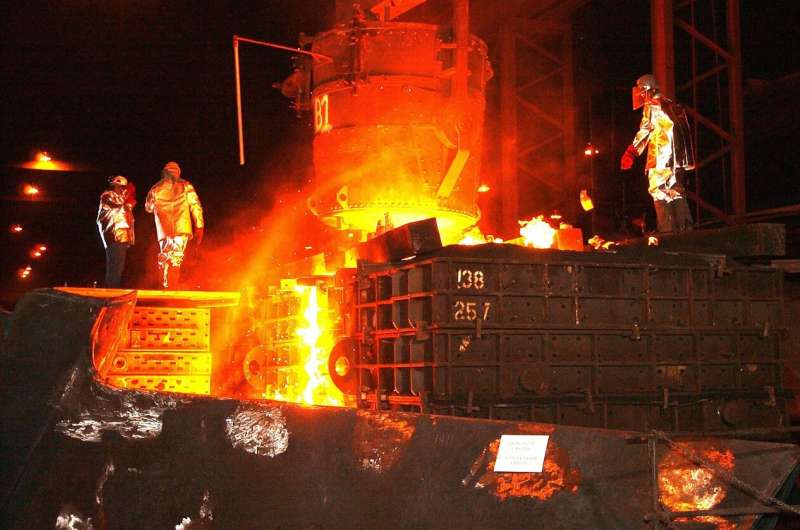A new process to recycle metallurgical slag

Researchers at Ural Federal University (UrFU) and the Institute of Metallurgy of the Ural Branch of the Russian Academy of Sciences (UrB RAS) have developed and successfully tested technology for the waste-free processing of slag. This technology helps obtain valuable materials, cast iron, and Portland cement clinker, while eliminating the problem of environmental pollution by industrial enterprises. An article describing the technology was published in the journal Steel in Translation.
"Our technology allows us to completely dispose of the two types of slags. It helps to solve the problem of anthropogenic pressure on the environment," said Oleg Sheshukov, Chief Researcher at UrFU and RAS, head of the scientific group. "It is especially important that we achieved complete processing of the out-of-furnace slag. Since it contains very little iron, such slag is usually not reused, but sent to waste dumps, constantly increasing the damage to the environment."
Technology development and testing consist of several stages. Typical ladle slag is a dust fraction that is unsuitable for use in further processes. Therefore, as a first step, scientists stabilized the ladle slag in a solid-state. For this, borate glass was added—a cheap waste material that also requires recycling.
The obtaining clinker from ladle slag is a more complex technological task than obtaining pig iron from an electric furnace. Therefore, the researchers first calculated the conditions necessary for the production of clinker. These are the chemical composition of the processed mixture (charge) and the temperature range. Then, with the help of crushing and mixing, they obtained a charge with admixtures of silicon and aluminum-containing minerals alite, belite, celite, and brownmillerite. At the laboratory, the briquetted charge was heated in a furnace up to 1500-1600 degrees Celsius, until it completely melted, kept, and then slowly cooled. The experiments made it possible to find out that the clinker, in terms of the quality corresponding to state standard, is formed from five slag compositions at a 10-minute exposure at a temperature of 1540-1560 degrees Celsius.
In the next stage, at the Seversky Pipe Plant, researchers selected samples of waste from the electric furnace production that were similar in structure. These samples contain a high iron content. As a result of several laboratory melts—using coke as a carbonaceous reductant of iron simultaneously with Portland cement clinker—the scientists obtained cast iron that satisfies the requirements of the state standard. At the same time, all raw materials were processed into commercial products.
The technology of joint waste-free production of pig iron and Portland cement clinker was successfully tested at the Klyuchevskoy Ferroalloy Plant. In the course of test heats, the developers came to the conclusion that in order to avoid overheating and in order to control temperatures and save money, a cheaper rotary tilt furnace should be used, not an arc furnace. Clinker is formed from the charge, which was fed into the rotary tilting furnace, as a result of mixing, reduction, and melting cast iron and slag residue. Subsequent mixing of clinker with gypsum dihydrate and firing the mixture in a kiln resulted in the formation of Portland cement, the most widely used type of cement.
More information: O. Yu. Sheshukov et al, Wasteless Joint Processing of Ladle Furnace and Electric Arc Furnace Slags, Steel in Translation (2021).
Provided by Ural Federal University



















